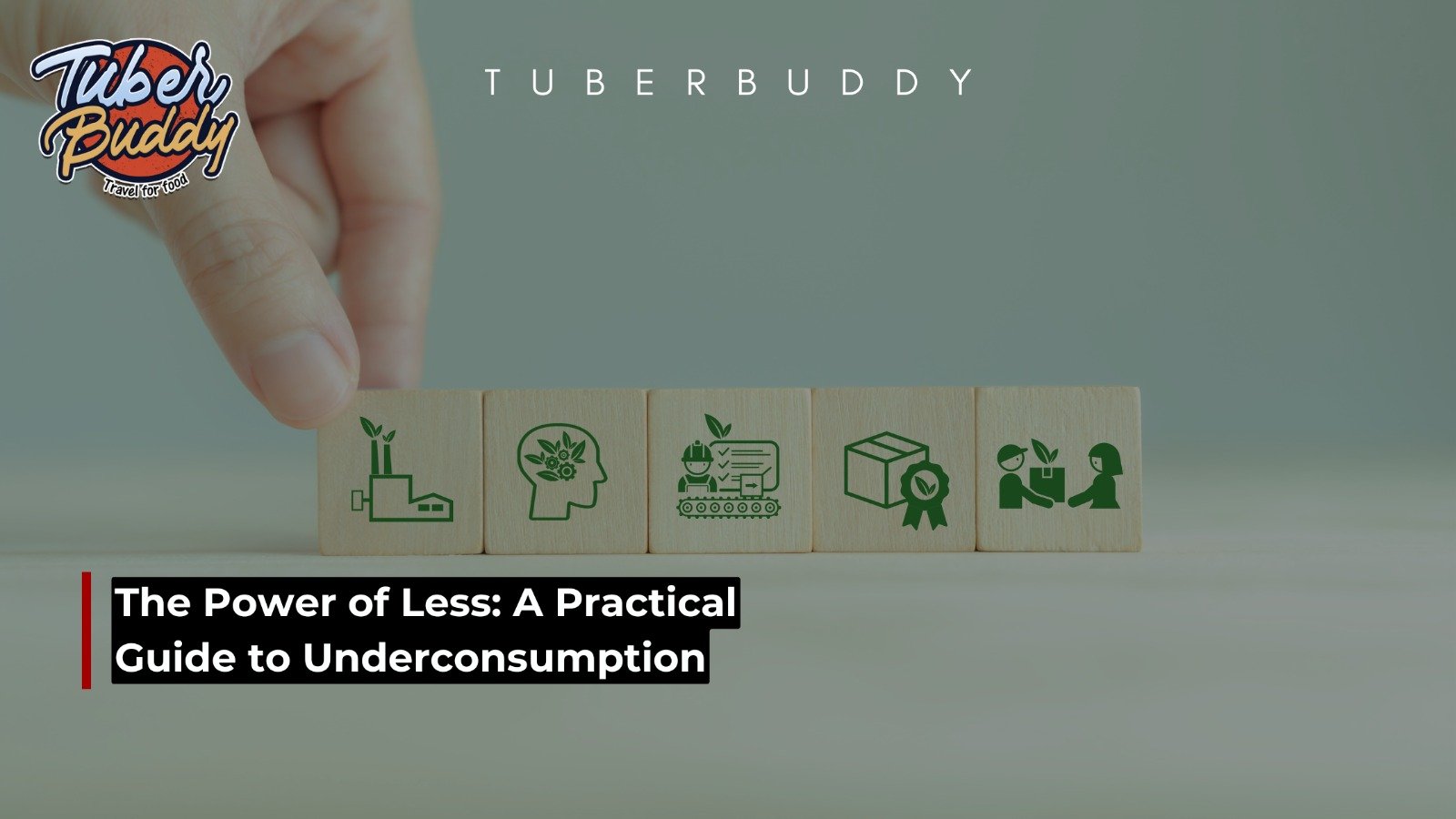The Power of Less: A Practical Guide to Underconsumption

Introduction: Less is More
In today’s fast-paced world, overconsumption has become the norm. From shopping sprees to constant upgrades, we’re often tempted to buy more than we need. But what if we turned this mindset around? Practicing underconsumption is a conscious decision to use less, reuse more, and live with intention. It’s not about deprivation—it’s about mindfulness, sustainability, and long-term fulfillment.
Why Practice Underconsumption?
Underconsumption isn’t just a trend—it’s a movement. It helps reduce one’s environmental footprint, save money, and declutter one’s life. By making intentional choices, one can discover a more meaningful and eco-friendly way to live.
1. Use Up What You Already Have
Before you click “add to cart,” pause. Check your shelves, drawers, and cupboards. Use what you already own before buying new. Cut open those almost-empty lotion or toothpaste tubes and scoop out every last bit. It might surprise you how much product is still left inside!
2. Upcycle and Reuse
Turn trash into treasure. Don’t toss containers and jars—upcycle them! Glass jars can become spice holders, planters, or candle holders. Boxes can be used for organizing. Make the best of waste and find creative ways to reuse your old items.
3. Repeat and Rewear Outfits
Forget the fear of outfit repetition. You only need a functional wardrobe—think five shirts and five bottoms that mix and match effortlessly. Repeating clothes is not a fashion crime; it’s a step toward sustainable living. Take proper care of your clothing so it lasts for years.
4. Decor and Tech: Use, Don’t Upgrade
Resist the urge to buy new decorations or the latest tech every year. Reuse last year’s party decor and evaluate your gadgets before upgrading. Can your phone or laptop last another year? If yes, save your money and reduce e-waste.
5. Explore Second-Hand Options
Before buying new, check second-hand or thrift stores. Pre-loved items are often just as good and cost a fraction of the price. From furniture to fashion, second-hand shopping reduces waste and supports a circular economy.
6. No-Spend Days & Wishlist Reviews
Have regular no-spend days. Mark them on your calendar and commit to not spending anything except on essentials. Also, keep a wishlist. Review it monthly. Chances are, half the items won’t even feel necessary after a while.
7. One In, One Out Rule
Every time you bring a new item home, let go of an old one. This “one in, one out” rule helps control clutter and ensures you truly value what you own.
8. Read and Share Your Books
Before buying new books, read the ones you already own. Once finished, donate or share them. This habit not only clears space but also spreads knowledge and joy.
9. Keep It Minimal: Two Bags Max
How many bags do you really need? One sturdy bag for daily use and one versatile bag for outings is enough. Declutter your collection and choose quality over quantity.
10. Buy Reusable, Not Disposable
Say goodbye to single-use products. Invest in reusable items—bottles, cutlery, bags, and containers. They last longer and reduce your waste significantly.
11. Repair Before You Replace
A broken item doesn’t mean it’s useless. Always try to repair it first. Fix your shoes, mend your clothes, or glue a broken handle. You’ll save money and reduce landfill waste.
12. Declutter Based on Usage
If you haven’t used something in the past three months, chances are you don’t need it. Be honest. Declutter your home and keep only what serves you.
Final Thoughts: Mindful Living Starts Today
Practicing underconsumption isn’t about restriction—it’s about intentional living. It’s a powerful way to save money, simplify your surroundings, and reduce environmental harm. Start small. Use what you have. Be resourceful. And remember, every mindful decision contributes to a better world.
For more budget friendly ways to elevate your lifestyle follow TuberBuddy blogs.
